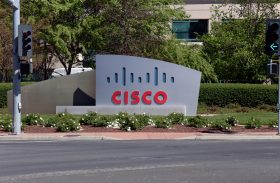Cisco, LF Edge Line Up for Battle of the Edge

As new classes of applications head for deployment at the network edge, the next major battle royale for control over software-defined networks (SDNs) appears to be unfolding.
This week, two major announcements show how this battle could emerge as a classic choice between an ecosystem of open technologies versus more traditional integrated platforms. Cisco outlined its strategy for extending the scope of its Application Centric Infrastructure (ACI) framework from the network edge to the cloud, launching HyperFlex 4.0. And The Linux Foundation has launched LF Edge, an organization to establish an open, interoperable framework for edge computing.
Cisco Expands HCI
At a Cisco Live EMEA 2019 event today, Cisco launched HyperFlex 4.0, which can now be extended to support a two-node hyperconverged infrastructure (HCI) appliance intended to support HyperFlex Branch applications deployed at the network edge.
That HyperFlex Anywhere initiative complements an existing ACI Anywhere that can integrate ACI with the SDN frameworks in Amazon Web Services (AWS) and Microsoft, says Daniel McGinnis, senior director for data center marketing at Cisco. Rather than requiring IT organizations to deploy an additional SDN framework in addition to the ones already made available by cloud service providers, McGinnis says that Cisco is making it possible to programmatically invoke those SDNs via ACI.
The third leg of overall Cisco strategy is built around Cisco CloudCenter Suite, a cloud-based suite of management tools that incorporate application lifecycle management tools, improved workflow automation, and enhanced cost optimization and governance tools. CloudCenter can now be consumed as a true software-as-a-service (SaaS) application. Cisco has also added a tiered pricing model alternative based on the number of CloudCenter features an organization actually consumes.
Collectively, HyperFlex, ACI, and CloudCenter are now the three elements of Cisco’s overall approach to managing IT at a time when applications are becoming more distributed than ever, says McGinnis.
Linux Foundation's Open Model
One of the ever-present debates in the IT industry is the choice of relying on emerging open source technologies versus commercial frameworks that might lock users into proprietary frameworks.
The Linux Foundation indicates it intends to take its open approach to the edge with the launch of LF Edge, an umbrella organization to establish an open, interoperable framework for edge computing.
LF Edge brings several existing open source projects, including, Akraino Edge Stack, EdgeX Foundry, and Open Glossary of Edge Computing, that were previously being developed by different arms of The Linux Foundation under one larger umbrella, says Arpit Joshipura, general manager for The Linux Foundation.
The goal is to make it simpler to employ the same set of edge computing technologies regardless of use case, says Joshipura.
As the projects evolve, IT vendors will be able to collectively leverage a base set of technologies that don’t provide fundamentally differentiated value, adds Joshipura. Competition will be increasingly focused on how each vendor goes about managing various frameworks deployed at the edge in much the same way they compete in the cloud, says Joshipura. The size of the platforms may be different, but for all intents and purposes, edge computing platforms are a type of cloud, says Joshipura.
“Everything that is true in the cloud will be true at the edge,” says Joshipura.
LF Edge at launch has drawn support from over 60 different vendors and consortiums, including Arm, AT&T, Baidu, Dell EMC, Ericsson, HP Inc., HPE, Huawei, IBM, Intel, Juniper Networks, Nokia Solutions, NTT, Qualcomm Technologies, Red Hat, Samsung Electronics, Seagate Technology, and WindRiver.
Most noticeably absent from that list is, of course, Cisco. There’s nothing to say Cisco won’t choose to support LF Edge at some future date. After all, Cisco has already signaled its intent to broadly embrace Kubernetes inside the data center as well as the network edge. At the recent Kubecon + CloudNativeCon 2018 conference, Ed Warnicke, a principal engineer in the Office of Open Source Initiatives at Cisco, revealed Cisco is actively research using Kubernetes as a mechanism to unify its disparate software-defined wide area network (SD-WAN) platforms deployed at the network edge. The issue IT leaders will need to monitor closely is the degree to which open-source technologies merely reduce the cost of research and development for IT vendors versus promoting true portability and interoperability.
Naturally, it will be some time before all the competing edge computing initiatives sort themselves out. But the one thing that many savvy IT leaders will be keeping in mind in the months ahead is the degree to which they can eliminate, or at least reduce, dependencies on proprietary technologies that lock them into a specific platform.












